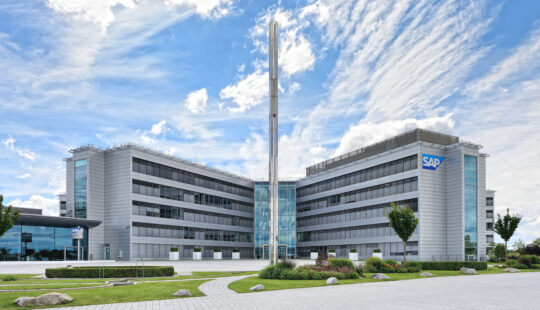According to Oxford Languages, DNA is “the fundamental and distinctive characteristics or qualities of someone or something, especially when regarded as unchangeable.” It is interesting to me that they provide the following statement as an example of how the term might be used: “Diversity is part of the company’s DNA.” This is something I have been thinking and saying for a while now.
What does it mean for a company to make diversity and inclusion part of its DNA? Just as our physical characteristics, inner beliefs, and qualities serve as the DNA that guide us personally, for corporate America, it means that when something is important to us and our companies, it becomes a business imperative that we work together to make a core component of our corporate belief system, daily principles, and behavior.
By embedding diversity and inclusion into their DNA, companies can experience benefits including increased employee engagement, higher productivity and innovation, better customer satisfaction, and stronger financial results.
This important shift in mindset creates a business case, drives change management, and makes the workplace more inclusive. As famously stated by Valerie Jarrett, senior advisor to former U.S. President Barack Obama, “Talent is ubiquitous, opportunity is not.” When you make diversity and inclusion your DNA, it breaks through systemic barriers and opens opportunities for people who are not fully represented in the workplace, especially in the tech industry, driving equality and equity in the world around us — and we really need it.
In the case of SAP, one of our “How We Run” behaviors is to embrace differences. This is critically important for a global organization with more than 100,000 employees from over 150 nationalities. But more than that, we want people to experience a sense of belonging and inclusion so they can perform at their best.
In North America, SAP has a diversity and inclusion council and ambassadors who help with talent attraction and retention, supplier diversity, and more. We work very closely with our employee network groups to drive employee engagement, career development, and advancement. In this way, diversity and inclusion becomes a matter of living our personal values with authenticity in alignment with corporate principles.
In order to make diversity and inclusion part of a company’s DNA, you must have executive sponsorship from the business, tie diversity and inclusion to organizational goals, and align it to your purpose — and it needs to be owned by everyone, not just HR. When this happens, it becomes foundational to all business practices, operational procedures, daily interactions and transactions with employees, customers, and partners. It is repeatable, sustainable, and transformative.
To go back to the dictionary, transformative is defined as “causing a marked change in someone or something.” This is a great example of what diversity, inclusion, and equity are all about. The path forward is truly a journey and not a destination. Therefore, who we bring with us and what we learn along the way are essential to driving change in our companies and in the world. Understanding our internal and external stakeholders and how they influence or empower the processes are also key to shifting a corporate culture. Recognize that equality is good, equity is better, but the removal of systemic barriers is best.
So, I’ll leave you with a few recommendations for making diversity and inclusion part of your company’s DNA:
- Tie it to your organizational goals and objectives, policies and procedures.
- Establish targets, with measurement systems for accountability to track progress.
- Implement programs or interventions to drive business outcomes and help your bottom line.
- Leverage technology to streamline processes, mirror society and meet customers’ needs.
- Partner with Talent Acquisition, Communications, Sales and Procurement to redesign and generate awareness for inclusive practices.
Embracing diversity and inclusion is a journey, not a destination. The journey will not always be easy, and sometimes it will be quite difficult, but it is worthwhile since these topics celebrate your most important assets — people — while supporting organizational goals and building sustainable, inclusive businesses.
DNA represents the fabric of our being, it is end-to-end. It’s about inclusion, equity, and cultural competence. Be strategic and enjoy successes along the way.
To hear more about making diversity and inclusion part of your organization’s DNA, and to learn how the SAP SuccessFactors Human Experience Management Suite supports diversity and inclusion efforts, watch this LinkedIn Live session on demand.
Margo’t Goodson is vice president and head of North America Diversity & Inclusion at SAP.



